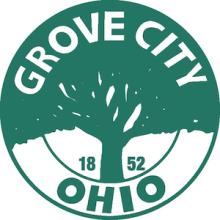Franklin County Infrastructure Bank To Invest In Grove City, Ohio Fiber
On August 1, 2017, the Franklin County Infrastructure Bank awarded Grove City, Ohio a $2 million loan to support their construction of a municipal fiber optic network.
The Grove City Plan
According to the city’s Request for Proposal (RFP), the city is focused on first establishing an institutional network (I-Net) and plan to expand it to serve local businesses over time. The initial fiber optic network will connect Grove City to the South-Western City Schools, the townships of Jackson, Prairie, Pleasant, and the Solid Waste Authority of Central Ohio (SWACO). The goal is to create a network with a baseline of ten gigabits symmetric service, ten times the speed of current connections provided by Spectrum (formerly Time Warner Cable).
According to Mayor Richard “Ike” Stage, the increase in network speed will attract businesses and will generate a 100 new jobs for the city. Josh Roth, Senior Program Coordinator for Economic Development and Planning, has said “that Grove City has committed to one hundred jobs over the next three years.”
During the August 1, 2017 general session, the Franklin County Board of Commissioners passed the resolution to authorize the loan to the city of Grove City.
Franklin County Commissioner Kevin L. Boyce celebrated the project:
“[T]he fiber optics really makes a difference because companies will look at whether to expand or move there [Grove City]. It could be a deciding factor. Those are jobs that are retained that you may not see."



